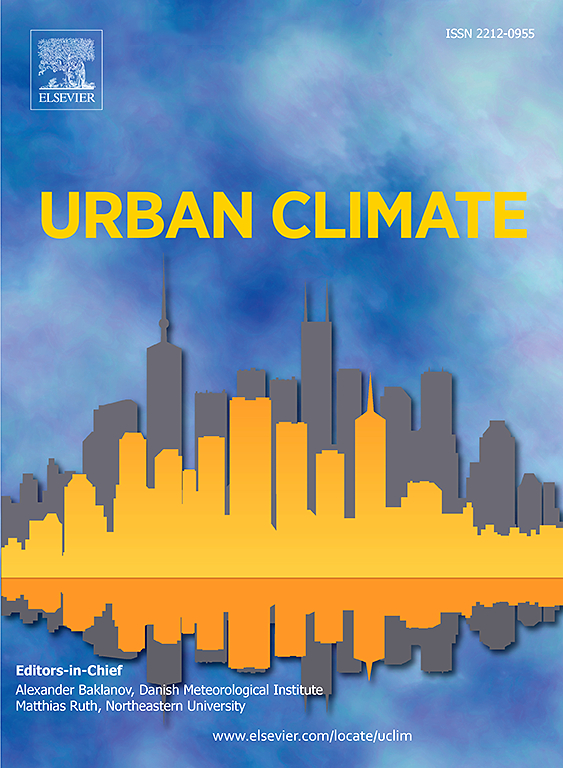Geo-spatial distribution of air pollutants in urban area and its potential health risk analysis solutions
IF 6
2区 工程技术
Q1 ENVIRONMENTAL SCIENCES
引用次数: 0
Abstract
Air quality degradation poses significant risks to human health and contributes to climate change. Unplanned urbanization, rapid population growth, reduced vegetation cover, and emissions from industries and vehicles, particularly in urban areas, have led to a considerable increase in air pollutants and emission sources which has greatly increased the prevalence of respiratory disease. For estimating the spatiotemporal burden of criteria air pollutants on community health, we monitored the seasonal variation in ambient air quality of nine administrative divisions in the northeastern regions of Pakistan from June to December 2021 from road sides. HAZ-SCANNER was used for five major air pollutants including Particulate Matter (PM10 and PM2.5), nitrogen dioxides (NO2), and carbon monoxide (CO), and a Mobile Van was used for sulfur dioxide (SO2). Overall results showed higher concentrations of air pollutants as compared to Punjab Environmental Quality Standards (PEQs). The concentration of PM2.5 ranged from 282.21 ± 35.19 μg/m3 to 350.38 ± 21.32 μg/m3. PM10 levels varied from 150.8 μg/m3 to 404.5 μg/m3. Additionally, NO2, SO2 and CO concentrations ranged from 128.30 ± 14.24 μg/m3 to 254.96 ± 12.86 μg/m3, 259.08 ± 5.44 μg/m3 to 137.02 ± 6.10 μg/m3 and 23.15 ± 3.92 mg/m3 to 15.77 ± 2.17 mg/m3, respectively. The results showed that the concentration of criteria air pollutants varied with the meteorological conditions in the study area. Pearson correlation showed a significant negative correlation with atmospheric temperature and solar radiation indicating that with an increase in temperature and solar radiation, the ambient air pollutants decreased. The PM2.5/PM10 ratio was 0.74. Health risk assessment revealed a higher health quotient for PM compared to other pollutants. This research accentuates the urgent need to address air pollution in Lahore and advocates for effective interventions to mitigate the impact on human health and promote sustainable air quality management.

城市大气污染物地理空间分布及其潜在健康风险分析解决方案
空气质量退化对人类健康构成重大风险,并助长气候变化。无计划的城市化、人口迅速增长、植被覆盖减少以及工业和车辆排放,特别是在城市地区,导致空气污染物和排放源大量增加,大大增加了呼吸道疾病的发病率。为了估计标准空气污染物对社区健康的时空负担,我们从2021年6月至12月从路边监测了巴基斯坦东北部9个行政区划的环境空气质量的季节性变化。HAZ-SCANNER用于检测颗粒物(PM10和PM2.5)、二氧化氮(NO2)和一氧化碳(CO)等5种主要空气污染物,移动面包车用于检测二氧化硫(SO2)。总体结果显示,与旁遮普环境质量标准(PEQs)相比,空气污染物浓度更高。PM2.5浓度范围为282.21±35.19 μg/m3 ~ 350.38±21.32 μg/m3。PM10水平在150.8 ~ 404.5 μg/m3之间变化。NO2、SO2和CO浓度范围分别为128.30±14.24 ~ 254.96±12.86、259.08±5.44 ~ 137.02±6.10和23.15±3.92 ~ 15.77±2.17 mg/m3。结果表明,研究区大气中标准污染物浓度随气象条件的变化而变化。Pearson相关与大气温度和太阳辐射呈显著负相关,表明随着温度和太阳辐射的增加,环境空气污染物减少。PM2.5/PM10比值为0.74。健康风险评估显示,与其他污染物相比,PM的健康商更高。这项研究强调迫切需要解决拉合尔的空气污染问题,并倡导采取有效干预措施,减轻对人类健康的影响,促进可持续的空气质量管理。
本文章由计算机程序翻译,如有差异,请以英文原文为准。
求助全文
约1分钟内获得全文
求助全文
来源期刊

Urban Climate
Social Sciences-Urban Studies
CiteScore
9.70
自引率
9.40%
发文量
286
期刊介绍:
Urban Climate serves the scientific and decision making communities with the publication of research on theory, science and applications relevant to understanding urban climatic conditions and change in relation to their geography and to demographic, socioeconomic, institutional, technological and environmental dynamics and global change. Targeted towards both disciplinary and interdisciplinary audiences, this journal publishes original research papers, comprehensive review articles, book reviews, and short communications on topics including, but not limited to, the following:
Urban meteorology and climate[...]
Urban environmental pollution[...]
Adaptation to global change[...]
Urban economic and social issues[...]
Research Approaches[...]
 求助内容:
求助内容: 应助结果提醒方式:
应助结果提醒方式:


